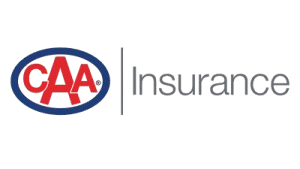The Best Home Insurance Quotes in Victoria
Compare and save an average of $417* on Victoria home insurance. Get a better rate.
Compare Victoria home insurance quotes from providers you trust

Jump straight to...
- Home insurance in Victoria
- How RATESDOTCA finds the best home insurance in Victoria
- Which companies offer home insurance quotes in Victoria?
- How to get the cheapest home insurance in Victoria
- How to get the best home insurance quotes in Victoria
- What risks do homeowners face in Victoria?
- Frequently asked questions about home insurance in Victoria
Home insurance in Victoria
Victoria, the capital of British Columbia, is popular for its ocean and mountain views. Many people move to the city of about 90,000 during their retirement years to enjoy its steady economy and temperate climate.
According to the Victoria Real Estate Board the Multiple Listing Service® Home Price Index benchmark value for a single-family home in August 2022 was $1.39 million, down from July’s value of $1.43 million.
While it’s one of the most robust markets in the country, many homeowners are keen to minimize their living expenses, including securing competitively priced home insurance.
To do so, it’s necessary to understand how the product is structured. Armed with knowledge, homeowners can then customize their policies and make certain they’re getting the best coverage at the lowest available rate.
Most home insurance policies have four elements of coverage:
- Property: Protects the home and buildings on the property such as a garage.
- Contents: Protects the contents of the home, including electronics, clothing and personal items. For coverage of especially valuable items such as jewelry a rider can be added to the policy for greater protection.
- Liability: Offers financial protection if someone is injured at the home. Also extends protection to the policyholder if they unintentionally damage someone else’s property.
- Additional living expenses: Covers costs associated with being away from the home while it’s being repaired following a covered peril. Compensates the homeowner for expenses such as lodging and groceries.
Homeowners can choose from one of three insurance package types. Insurance providers may market each differently, but they’re generally described as outlined here:
- Basic: Protects the home against perils named in the policy such as fire and wind. This package offers the least amount of coverage available and as a result tends to be the least expensive. It is sometimes called a ‘named perils’ policy.
- Broad: Protects the home against all perils as well as protection for some contents. May sometimes be called a ‘standard’ policy.
- Comprehensive: The greatest amount of coverage available, protecting the home against all perils to the home and its contents. It is often referred to as an ‘all perils’ policy.
Optional coverage
Since not every peril is covered by basic, broad and comprehensive policies, homeowners can add coverage for greater protection. This optional coverage is also referred to as add-ons, endorsements or riders.
- At home business: For those who run a business from the home – whether sales or service-based – an added endorsement can help protect equipment and cover income that’s lost due to a covered peril. We recommend that any homeowner with a home-based business disclose it to their home insurance provider to avoid having a claim denied.
- Earthquake: An endorsement for protection against earthquakes is an especially good idea for homeowners in Victoria which is in a region that has previously been affected by earthquakes. This add-on also includes protection against landslides which are also common in mountainous regions such as those throughout British Columbia.
- Flood protection: Almost all home insurance policies exclude flood protection. Coverage for damage from overland flooding, tidal flooding and sewer back-up requires that homeowners add one or more endorsements to their policy. Some insurance providers offer water protection packages which include protection against each type of flooding. As extreme weather becomes more common throughout Canada and sea levels continue to rise, we strongly encourage homeowners in Victoria to add flood protection to their home insurance policies.
- Identity theft: Covers the cost of replacing personal documents if the homeowner’s identity is stolen.
- Locksmith: Covers the cost of replacing locks following a break-in.
- Mass evacuation: Covers costs associated with leaving the home due to a government-ordered evacuation. Homeowners will be compensated for expenses such as lodging and groceries while away from home.
Though home insurance isn’t required by law anywhere in Canada, we recommend that homeowners in Victoria purchase it and add at least flood protection and earthquake coverage to their policies.
The region’s terrain means that homes there are vulnerable to flooding as well as earthquakes and landslides. Without coverage, homeowners risk losing their homes and their contents.
Recent BC home insurance quotes

Recent home Insurance Quote from Winchester springs, ON
Detached 1,500 sq ft
July 13, 2025
Cheapest Quote
$ 155 / month
$ 1,855 / yearAverage Quote
$ 348 / month
$ 4,170 / yearSavings
$ 193 / month
$ 2,316 / year
56 %
Recent home Insurance Quote from Brampton, ON
Semi-detached 1,883 sq ft
July 12, 2025
Cheapest Quote
$ 150 / month
$ 1,794 / yearAverage Quote
$ 392 / month
$ 4,699 / yearSavings
$ 242 / month
$ 2,904 / year
62 %
Recent home Insurance Quote from Orléans, ON
Detached 1,996 sq ft
July 12, 2025
Cheapest Quote
$ 107 / month
$ 1,279 / yearAverage Quote
$ 206 / month
$ 2,475 / yearSavings
$ 100 / month
$ 1,200 / year
48 %
Home insurance quotes are compared from Apollo Insurance, CAA, Economical Insurance, Pembridge, Square One Insurance, and SGI
How RATESDOTCA finds the best home insurance in Victoria
Homeowners who use our online quote tool to compare quotes from dozens of the most-trusted insurance providers in Canada can save hundreds of dollars each year. The form takes less than three minutes to fill out and quotes are free. If you’re looking for the cheapest home insurance in Victoria, comparing rates is the crucial first step.
Which companies offer home insurance quotes in Victoria?
| Insurance Companies | Company Type | Phone | Address |
|---|---|---|---|
| Harbord - The Home Insurance People | Insurance broker | 1 844-544-4663 | 780 Tolmie Ave. Suite #203, Victoria, BC V8X 3W4 |
| Insurance Hotline | Quotes comparison | 1 (855) 821-7312 | 225 King St W, Suite 1000, Toronto, ON, M5V 3M2 |
| LowestRates.ca | Quotes comparison | (604) 829-3714 | 730 Alexander St. Unit #1, Vancouver, BC V6A 1E3 |
| Perpetual Insurance Services | Insurance agency | (250) 953-8098 | 3147 Douglas St. Unit 221, Victoria, BC V8Z 6E3 |
| RATESDOTCA | Quotes comparison | 1 (844) 726-0907 | 225 King St W, Suite 1000, Toronto, ON, M5V 3M2 |
| Scoop Insurance | Insurance brokers | 1 (866) 456-6620 | 300 Lincoln St. Unit 22, Welland, ON L3B 4N4 |
| Thunderbird Insurance Brokers Ltd/. | Insurance agency | (250) 385-9795 | 1032 Yates St., Victoria, BC V8V 3M7 |
| Western Coast Insurance Services Ltd. | Insurance agency | 1 844-802-7603 | 1150 Douglas St., Victoria, BC V8W 3M9 |
How to get the cheapest home insurance in Victoria
When the cost of living seems especially high, it’s helpful to be aware of easy-to-implement tactics for saving. There are many ways for Victoria homeowners to reduce their home insurance costs. They include:
- Agree to a credit check: Victoria residents who consent to a credit check may be eligible for a discount on their home insurance. Though this tactic isn’t available to residents in every province, in British Columbia a good credit score can be used to secure a lower home insurance premium. (By law, a bad credit score cannot be used to increase the premium).
- Bundle: When a homeowner arranges for each of their insurance policies to be held by a single provider, they may be able to secure a lower premium. The provider is often willing to offer discounts when they hold more of an individual’s business.
- Compare available rates: Victoria residents who compare available home insurance rates every time their policy is up for renewal may be able to secure savings. We recommend that homeowners comparison shop each year when their policy is up for renewal to avoid paying any penalty associated with breaking the policy term.
- Customize the policy: Insurance is a highly customizable product. Those who understand how it’s structured can decide how much coverage makes sense for them and aligns with their risk tolerance. By fine-tuning a policy to make sure it offers sufficient protection but nothing more, homeowners can save.
- Don’t smoke: Homeowners who don’t smoke may be eligible for a lower premium because the provider deems a fire to be less likely in the home.
- Increase the deductible: Homeowners who can afford to pay a higher deductible if they file a claim may be able to secure a lower premium
- Install alarms: When a home insurance provider sees that a homeowner has taken reasonable steps to mitigate safety risks within the home, they may respond by offering a lower premium. This can include installing smoke and burglar alarms as well as a carbon monoxide detector.
- Pay annually: If a homeowner is willing and able to pay upfront for the full annual cost of their home insurance policy, they may be able to secure a lower premium.
How to get the best home insurance quotes in Victoria
Tell us about your home
Answer a few basic questions about your home.
Compare your quotes
See quotes from top insurance companies side by side.
Choose the right coverage
Find the right protection for your home and everything in it.
Secure your rate
Connect with the provider and secure your rate.
What people say about our quotes

Based on 6,449 reviews

Comparing Travel Insurance …
This was the only site I could find that allowed me to compare different travel insurance options. I particularly liked the ability to look at sample documents.
Toronto

Amazing
Very helpful and easy to use
Safe travels

Easy quick selection of rates
Easy quick selection of rates
J K

Great help in finding the best rate!
Great help in finding the best rate! Thanks a lot!
Ruthielyn opina

I like how I can quickly I can select…
I like how I can quickly I can select travel insurance. The web site had an issue earlier but seemed to correct itself.
Dennis

prompt service
Respnded quickly, recommended company was excellent
Michael W.
What risks do homeowners face in Victoria?
Due to its location – on the shore of the Pacific Ocean and in one of the most seismically active regions in the country that’s also prone to landslides – homes in Victoria are uniquely vulnerable.
Homeowners in Victoria should consider adding coverage to their policies to protect against damage from the following perils:
- Earthquake/landslide: The Victoria region recorded at least two historic earthquakes in the 20th century. In 1918, a magnitude 7 quake struck and in 1946 one with a magnitude of 7.3. Dozens of earthquakes of lesser magnitude affect the region each year. For a Victoria home to be adequately protected against this peril and that of landslides, coverage must be added to the policy.
- Overland flooding: The impacts of climate change are predicted to have a dramatic impact on the Victoria region as sea levels around the world continue to rise. For a home to be protected against water that enters the home from a nearby waterway, coverage must be added.
- Sewer back-up: Insurance providers distinguish between different types of flooding. As a result, flood protection in the form of sewer back-up must be added to the policy. It covers damage from water that enters the home from a drain or toilet. This type is flooding is common when the water table overflows and/or municipal sewers are overwhelmed by rainwater.
Some home insurance providers offer water protection packages that include coverage for different types of flooding. We strongly encourage homeowners in Victoria to make sure they understand what flood protection they’ve added to their policy – particularly as increasing severe weather is leading to more and more Canadians to gain firsthand experience with flood damage to their homes.
Frequently asked questions about home insurance in Victoria
Here's everything you need to know about home insurance in Victoria.
How much does house insurance cost in Victoria?
The cost of home insurance in Victoria varies as much as the homes and their homeowners. This is because of how many different factors go into determining home insurance premiums. Homeowners looking for the least expensive option can secure it by several means, including purchasing the least amount of coverage. However, we recommend that any homeowner in Victoria carefully consider what perils are unique to the region before securing a policy. Forgoing coverage to pay less on a premium could prove unwise in the event of a disaster that causes damage not covered.
Which company offers the cheapest Victoria home insurance?
There’s no company that offers the cheapest home insurance in Victoria. Instead, finding the best policy means finding one that aligns with the homeowner’s needs and circumstances and then confirming which company provides it at the most affordable rate. We recommend that homeowners in Victoria compare rates every year when their policy is up for renewal. Our free, online tool takes less than three minutes to use and could result in hundreds of dollars in savings.
What is not covered by most Victoria home insurance policies?
Home insurance policies often have exclusions which stipulate perils that are not covered. For a Victoria home to be protected against damage from flooding and earthquake additional coverage must be added. We also encourage homeowners to consider other add-ons such as coverage for an at-home business as well as protection against identity theft and coverage for costs associated with a mass evacuation. Though many of these perils seem unlikely, homeowners tend to be relieved that they have the coverage if disaster strikes.
How do I save on Victoria home insurance?
Tailoring a home insurance policy so that it includes the coverage necessary and nothing more is a good first step to bringing down insurance costs. Other tactics include paying upfront for the full-year term of the policy and/or increasing the deductible. In general, when a homeowner can reflect to their insurance provider that they’ve taken steps to ensure the safety of the home (such as adding smoke and burglar alarms as well as a carbon monoxide detector), they may be able to secure a lower rate.
How much insurance coverage do I need for my home in Victoria?
The amount of coverage needed is up to the homeowner who must decide on their preferences in the event of covered peril. For example, if having a lower monthly deductible is their preference, they may decide to forgo contents coverage and any additional protection against flooding and earthquake.
The homeowner must also decide on coverage limits. For example, when it comes to liability protection, they may be able to secure coverage for the minimum requirement of $200,000. However, most insurance providers recommend a limit of at least $1 million.
Homeowners will pay less for less coverage, but the consequence of having less coverage could end up being very expensive if the home is damaged by a covered peril.
What is a loss settlement option?
A loss settlement option refers to how a homeowner is compensated after filing a claim. They will have to decide between actual cash value and replacement cost. The former means that they’ll be compensated for the value of the item at the time it was damaged whereas the latter means that they’ll be compensated for the value of the item’s modern equivalent.
Is fire covered under my Victoria home insurance policy?
Yes, fire protection is a peril included in most home insurance policies including basic, broad and comprehensive. It also protects against damage from wildfire.
*Shoppers who obtained a home insurance quote on RATESDOTCA from January to December 2023 saved an average amount of $417. The average savings amount represents the difference between the shoppers’ average lowest quoted premium and the average of the second and third lowest quoted premiums generated by RATESDOTCA. Excludes tenant and condo insurance.











